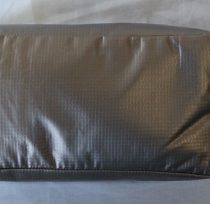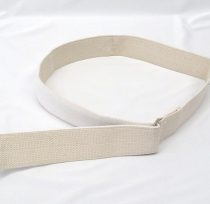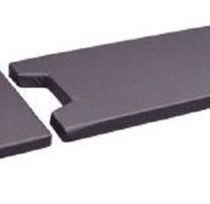Sandbags
Our medical sandbags are used in a variety of applications by doctors and p...
Restraints in the medical environment are tools that restrict the patient’s movement. Restraints can help in keeping an individual from getting injured or injuring others. They are typically used as the last resort to controlling the patients. The use of physical restraints in a medical institution is more common than you might think for patient safety straps. Therefore, there are strict policies laid out with regard to its use. These rules and regulations ensure that physical restraints are not misused on the patients.
Medical institutions of all kinds use physical restraints to ensure that the patients, as well as the medical staff, remain safe and secure. In an acute care facility, physical patient restraints are used in ICUs where patients are semiconscious and lucid. The restraints are used to keep the patients still who might be at risk of falling out of the best or might pull inserted tubes from their bodies. Medical staff uses them to avoid critical situations where patients remove their breathing tubes as such action and physical harm the patients and deprive of them the necessary oxygen needed. At times patients are weak and are at high risk of falling from the bed. In such cases, medical staff restricts patients for their safety.
Depending on the situation there are different types of physical restraints that include –
Bed rails on all the corners of the patients’ bed are the most basic form that physical restraint comes. It is used to protect the patient from falling out of bed. Additionally, there are straps that roll from side to side and hooks underneath the bed to protect patients from falling. These straps come with special padding that allows medical staff to tighten the straps without causing any skin tears and bruising on the patients.
These are another form of common physical restraint commonly used in the medical environment. Safety mittens are typically used on newborns to prevent them from scratching themselves. They are also used for patients who try to undo their other restraints frequently.
Limb restraints are put around the patient’s ankle or wrists. It helps in avoiding harmful limb activity. Additionally, they are used to stop patients from hurting themselves or others around them.
These safety restraints are worn like a normal vest, and it has a long strap at the bottom of each side that can be knotted together behind the chair.
Soft Splints are recommended for patients who need additional limb restraint to prevent the incidents of tube pulling.
Medtrica is a credible company that manufactures and provides an extensive collection of medical equipment. We design a wide range of patient safety straps to ensure that patients and medical staff are safe. The material we use in our manufacturing process is high quality to ensure safety while ensuring no harm is caused to the patient due to the restraints. Our restraints are anti-bacterial, anti-fungal, anti-static, latex-free, stain, and tear resistance. With us, you will get the best quality physical restraints that will help you keep the patients safe in various circumstances.
We manufacture a variety of products for bed and room safety to ensure that you—and your patients—rest easy.
Our bed and room safety products include bed rail and floor pads, mattress covers and overlays, lifts, and transfer belts. Custom sizing is available should you need it.
All materials used exceed flammability standards Cal TB 117 and 16CFR 1632, and are anti-bacterial, anti-fungal, stain and tear resistant, anti-static and latex free.

Our medical sandbags are used in a variety of applications by doctors and p...

A gait belt is a device that is used to move people challenged with mobilit...

A Skytron Surgical Table is a marvelous innovation by Skytorn Canada to mee...

DuraSponge™ retains up to 15% more cleaning solution than standard sponge...
Trademark Information:All trademarks and or trade names mentioned or used are the property of their respective owners.
Every effort has been made to properly capitallize, punctuate, identify and attribute trademarks and tradenames to their respective owners, including the use of ® and TM (TM) wherever possible and practical.
All product and company names are trademarksTM or registered® trademarks of their respective holders. Use of them does not imply any affiliation with or endorsement by them.
